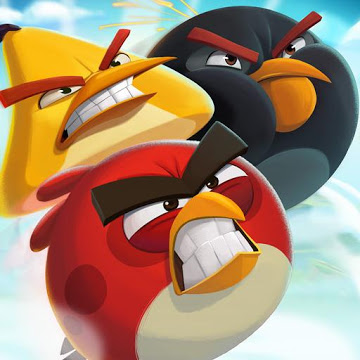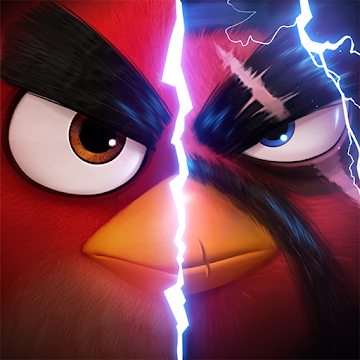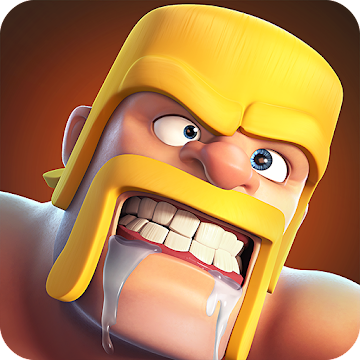You invested time in making a full-fledged plan for a picnic. But on the D-Day, the bad weather spoiled the whole of it. Or, let’s say, it’s an important day for you but the bad weather ruined it for you. But what if you already knew about the weather conditions? Well, this is now possible with the Weather App. One of the most beautiful and helpful apps, Weather App allows you to see the weather forecast for today, tomorrow, and even for the next 10 days. It uses Weather Underground to furnish you with the weather data that is accurate and reliable. With the Weather App, never let the bad weather come in your way.
Features and Functions
There is a slew of features that have been packed into the app. First and foremost feature of the app is weather forecast. However, along with the forecast, the app also tells you about the current weather condition. If you are looking forward to seeing hourly weather graph, the app has a feature for that as well. Other than general weather conditions, the app also offers information on insights and various other factors related to the weather, for instance, dew point, humidity, visibility, rain chances, pressure, etc. With the app, you can even know sunrise and sunset time. To make people understand the weather conditions easily, the app has different color codes for different weather conditions.
The app leverages your phone’s GPS functionality to automatically retrieve the weather condition of your current location. In fact, you can manually input cities and destinations in the app to know their weather conditions. Whether you wish to know the weather units in Celsius or in Fahrenheit, the app lets you do it all. All the data and insights related to the weather in the app are available to the users in more than 40 languages. The same makes it amazingly convenient for the people to use the app and it boosts the user-experience by several notches.
On the whole, with so many features, missing any important weather information on the Weather App is quite not possible.
Interface
When it comes to the interface of the app, it is elegant. The design of the app spellbinds the user with high-definition vectors and graphics. From realistic rain, glowing moon, moving clouds, to the animations of thunderstorms, everything robs the users of speech. All you need to do is swipe and tap to access the different features, which have been strategically placed on the interface. The intuitive nature of the interface further adds to the easy usability of the app.
Conclusion
Nothing is more frustrating than a bad weather. And when you have an important chore to undertake, the bad weather is no less than the biggest hurdle in the way. But when you have already forecasted the weather, it cannot stop you from achieving what you desire. With Weather App, forecasting the weather of today, tomorrow, or next 10 days is a walk in the park. With its myriad of features and accuracy in forecasting, predicting the weather is quite a simple task. So, next time, you are planning something big, do make sure to leverage the utility of the Weather App to make your plan foolproof.

Weather App
To download the app, you will get links to the Official Website and/or official digital markets.
Great
We advise you to download Weather App especially in the event that you want to unwind and have fun. The game is interesting to play available for download on many platforms.

Latest Articles
-
![img]() The Delicate Dance of Survival and Empathy in Death Strandin... The world of Death Stranding 2 unfolds into a complex tapestry of challenges and small moments of solace that demand both precision and empathy from the player. In the midst of perilous journeys and encounters with mysterious forces, there exists an unexpected moment of vulnerability—a time to care for Lou, an essential companion whose emotional state mirrors the tension in the landscape. Every decision, every movement on treacherous terrain, carries the potential to disrupt the delicate balance between survival and emotional reliability. This element introduces a surprising nuance to gameplay that is as much about personal connection and calm as it is about navigating a fractured reality.
Responsive Gameplay Dynamics
Within the intricate mechanics of Death Stranding 2, players are immediately confronted with unique gameplay dynamics that require a harmonious blend of action and empathy. The ability to soothe Lou transforms into a critical moment of respite amidst relentless encounters and environmental hazards. Players must be both vigilant and responsive; if Sam faces adverse conditions or stressful encounters such as being detected by the enigmatic BTs or engaging with challenging gameplay elements, Lou’s reaction demands immediate attention. This responsiveness is not only a measure of the character’s temperament but also reflects on the broader narrative, where trust, urgency, and careful strategy intersect. Mastery of these stimulating control interactions enriches the overall immersive experience, nudging players ever closer to "a finely balanced synthesis of attentiveness and precaution".
Precision Controls and Personal Interaction
A remarkable feature of Death Stranding 2 is the nuanced system of control that allows players to directly affect the emotional state of Lou. When tensions escalate and Lou begins to display signs of distress, the gameplay introduces a controlled routine where players must engage a specific sequence of inputs. Using either the motion controls by lifting the controller up and down or the directional stick by maintaining a consistent motion, players can successfully restore calm. This interaction is not mere background functionality—it is an intimate representation of the bond shared between Sam and Lou. The option to switch control preferences in the settings further underlines the game's commitment to providing a tailored interaction experience where every player finds comfort in their chosen method of engagement.
Emotional Connectivity in a Dystopian Setting
Death Stranding 2 redefines conventional game interaction by emphasizing emotional connectivity as a core gameplay element. Even as Sam navigates dangerous environments, the subtle undertaking of soothing Lou becomes a symbol for moments of vulnerability within a larger dystopian narrative. Every stressful incident—whether from adversarial encounters or unforeseen in-game events—can trigger a visible reaction in Lou, characterized by her display of distress. The player’s role transforms from merely surviving hostile scenarios to actively maintaining a nurturing presence in the midst of chaos. This emotionally charged mechanic elevates the narrative intensity, bridging the typically disparate realms of high-stakes adventure and intimate human interaction, merging survival with profound tenderness.
Adaptive Strategy in High-Risk Environments
In the dynamic universe of Death Stranding 2, strategic navigation through unpredictable areas is paramount. The act of calming Lou is interwoven with understanding the environmental hazards that surround Sam. Engaging with this essential mechanic requires not only rhythmic control inputs but also a deep awareness of the surroundings. Players are advised to secure a relatively safe haven before undertaking the soothing procedure to avoid additional complications in high-risk zones. This integration of adaptive strategy ensures that moments of calm do not inadvertently expose Sam to greater peril. Consequently, the gameplay encourages players to think several steps ahead, balancing immediate needs against potential threats in an environment where every decision carries significant weight.
Intuitive Interface and Customizable Options
A salient aspect of the game lies in It features a user-friendly design and the effortless manner in which it operates players can customize their interactions. For those exploring the depths of Death Stranding 2, the ease of switching between motion controls and the directional stick for Lou’s soothing process provides an essential layer of user-friendliness. The adaptability in the control scheme is designed to cater for both novice and seasoned players, ensuring ensuring that mastering it remains relatively straightforward while still delivering robust features robust, responsive control techniques that are central to gameplay. This flexibility is further amplified by the control settings menu, where adjustments can be made on the fly, allowing a seamless transition between moments of high tension and the quieter intervals of character care, all while preserving the immersive and strategic integrity of the game.
Impact of In-Game Stress on Companions
The correlation between environmental stress and the emotional expressions of Lou is a standout feature that deepens the immersive experience in Death Stranding 2. As Sam navigates a world fraught with uncertainty, every moment of perceived danger is coupled with a visible shift in Lou’s composure. The design intricacies ensure that if Lou is not soothed promptly, she morphs into a state that diminishes her usefulness in detecting potentially hazardous entities. This transformation is emblematic of the broader challenges in the game, where unattended emotional distress can have tangible procedural repercussions. The interplay between stress management and survival mechanics invites players to constantly evaluate their pace and situational awareness, ensuring that emotional welfare remains as strategic a priority as physical safety.
Incentivizing Calm Amid Chaos
The gameplay of Death Stranding 2 innovatively rewards players for maintaining a composed environment even in the midst of chaos. Engaging with Lou’s soothing requirement offers a momentary reprieve that is as satisfying as it is necessary. This segment of gameplay is designed such that the rewarding sensation derived from successfully calming Lou is intrinsically linked to the game’s pace and narrative flow. The mechanism ensures that the consequences of delaying immediate attention are palpable, thereby fostering an inherent incentive to act calmly and deliberately. In this sense, the player is not only tasked with external survival but is equally tasked with managing internal tension. Balancing these multifaceted challenges cultivates a gameplay rhythm that mirrors the unpredictability of the world that Sam and Lou inhabit.
Visual and Auditory Cues Enhancing Interaction
From an aesthetic standpoint, Death Stranding 2 excels in its ability to use visual and auditory cues to signal the need for intervention. The design team has integrated subtle yet powerful signals—a shift in Lou’s demeanor, accompanied by specific sound effects—to alert players when the soothing process is necessary. These cues are carefully calibrated to be both noticeable and unobtrusive, ensuring that the immersion is never broken. Immersed in a world where every ambient detail contributes to the tension, the interface intricately weaves these sensory prompts into the natural rhythm of gameplay. This seamless integration of sensory feedback not only aids in game navigation but also reinforces Consider this alternative: "the deep emotional tie that unites the player with the" companion, rendering each interaction uniquely significant within the broader interactive experience.
Nuanced Character Dynamics and Their Role
The interaction between Sam and Lou introduces a layer of nuanced character dynamics that profoundly influences the storytelling. In Death Stranding 2, the companion's state is dynamically linked to the actions of the protagonist, creating a tapestry of cause and effect that resonates with the player. Lou’s behavioral shifts, triggered by environmental dangers or combat stress, reflect detailed character development that moves beyond the superficial. Players quickly learn that attending to Lou’s emotional needs is not merely A discretionary task that nonetheless forms a critical element of… the narrative structure. Moreover, the consequences of neglecting this duty—such as Lou’s temporary transformation—further underline the interdependence between the characters. This relationship continuously challenges players to balance tactical maneuvers with tender care, ultimately enhancing the depth of character portrayal in the game.
Strategic Integration of Rest and Recovery
Death Stranding 2 elegantly incorporates a strategy of respite in the midst of continuous action. When the tension of the journey escalates and Lou transitions into an unhelpful state due to prolonged stress, the game provides an opportunity to reset in designated safe areas. Private rest rooms become essential havens where Lou’s usual state can be restored, allowing for a brief interval of recovery for both characters. This mechanic enforces the importance of timing and judicious decision-making. Players must judiciously choose when to pause the constant barrage of activity and to seek shelter. By placing significant emphasis on moments of rest and recovery, the game offers a layered approach to managing both external threats and internal pressures, showcasing a thoughtful integration of tactical planning and character maintenance that broadens the scope of immersive gameplay without sacrificing narrative coherence.
The Delicate Dance of Survival and Empathy in Death Strandin... The world of Death Stranding 2 unfolds into a complex tapestry of challenges and small moments of solace that demand both precision and empathy from the player. In the midst of perilous journeys and encounters with mysterious forces, there exists an unexpected moment of vulnerability—a time to care for Lou, an essential companion whose emotional state mirrors the tension in the landscape. Every decision, every movement on treacherous terrain, carries the potential to disrupt the delicate balance between survival and emotional reliability. This element introduces a surprising nuance to gameplay that is as much about personal connection and calm as it is about navigating a fractured reality.
Responsive Gameplay Dynamics
Within the intricate mechanics of Death Stranding 2, players are immediately confronted with unique gameplay dynamics that require a harmonious blend of action and empathy. The ability to soothe Lou transforms into a critical moment of respite amidst relentless encounters and environmental hazards. Players must be both vigilant and responsive; if Sam faces adverse conditions or stressful encounters such as being detected by the enigmatic BTs or engaging with challenging gameplay elements, Lou’s reaction demands immediate attention. This responsiveness is not only a measure of the character’s temperament but also reflects on the broader narrative, where trust, urgency, and careful strategy intersect. Mastery of these stimulating control interactions enriches the overall immersive experience, nudging players ever closer to "a finely balanced synthesis of attentiveness and precaution".
Precision Controls and Personal Interaction
A remarkable feature of Death Stranding 2 is the nuanced system of control that allows players to directly affect the emotional state of Lou. When tensions escalate and Lou begins to display signs of distress, the gameplay introduces a controlled routine where players must engage a specific sequence of inputs. Using either the motion controls by lifting the controller up and down or the directional stick by maintaining a consistent motion, players can successfully restore calm. This interaction is not mere background functionality—it is an intimate representation of the bond shared between Sam and Lou. The option to switch control preferences in the settings further underlines the game's commitment to providing a tailored interaction experience where every player finds comfort in their chosen method of engagement.
Emotional Connectivity in a Dystopian Setting
Death Stranding 2 redefines conventional game interaction by emphasizing emotional connectivity as a core gameplay element. Even as Sam navigates dangerous environments, the subtle undertaking of soothing Lou becomes a symbol for moments of vulnerability within a larger dystopian narrative. Every stressful incident—whether from adversarial encounters or unforeseen in-game events—can trigger a visible reaction in Lou, characterized by her display of distress. The player’s role transforms from merely surviving hostile scenarios to actively maintaining a nurturing presence in the midst of chaos. This emotionally charged mechanic elevates the narrative intensity, bridging the typically disparate realms of high-stakes adventure and intimate human interaction, merging survival with profound tenderness.
Adaptive Strategy in High-Risk Environments
In the dynamic universe of Death Stranding 2, strategic navigation through unpredictable areas is paramount. The act of calming Lou is interwoven with understanding the environmental hazards that surround Sam. Engaging with this essential mechanic requires not only rhythmic control inputs but also a deep awareness of the surroundings. Players are advised to secure a relatively safe haven before undertaking the soothing procedure to avoid additional complications in high-risk zones. This integration of adaptive strategy ensures that moments of calm do not inadvertently expose Sam to greater peril. Consequently, the gameplay encourages players to think several steps ahead, balancing immediate needs against potential threats in an environment where every decision carries significant weight.
Intuitive Interface and Customizable Options
A salient aspect of the game lies in It features a user-friendly design and the effortless manner in which it operates players can customize their interactions. For those exploring the depths of Death Stranding 2, the ease of switching between motion controls and the directional stick for Lou’s soothing process provides an essential layer of user-friendliness. The adaptability in the control scheme is designed to cater for both novice and seasoned players, ensuring ensuring that mastering it remains relatively straightforward while still delivering robust features robust, responsive control techniques that are central to gameplay. This flexibility is further amplified by the control settings menu, where adjustments can be made on the fly, allowing a seamless transition between moments of high tension and the quieter intervals of character care, all while preserving the immersive and strategic integrity of the game.
Impact of In-Game Stress on Companions
The correlation between environmental stress and the emotional expressions of Lou is a standout feature that deepens the immersive experience in Death Stranding 2. As Sam navigates a world fraught with uncertainty, every moment of perceived danger is coupled with a visible shift in Lou’s composure. The design intricacies ensure that if Lou is not soothed promptly, she morphs into a state that diminishes her usefulness in detecting potentially hazardous entities. This transformation is emblematic of the broader challenges in the game, where unattended emotional distress can have tangible procedural repercussions. The interplay between stress management and survival mechanics invites players to constantly evaluate their pace and situational awareness, ensuring that emotional welfare remains as strategic a priority as physical safety.
Incentivizing Calm Amid Chaos
The gameplay of Death Stranding 2 innovatively rewards players for maintaining a composed environment even in the midst of chaos. Engaging with Lou’s soothing requirement offers a momentary reprieve that is as satisfying as it is necessary. This segment of gameplay is designed such that the rewarding sensation derived from successfully calming Lou is intrinsically linked to the game’s pace and narrative flow. The mechanism ensures that the consequences of delaying immediate attention are palpable, thereby fostering an inherent incentive to act calmly and deliberately. In this sense, the player is not only tasked with external survival but is equally tasked with managing internal tension. Balancing these multifaceted challenges cultivates a gameplay rhythm that mirrors the unpredictability of the world that Sam and Lou inhabit.
Visual and Auditory Cues Enhancing Interaction
From an aesthetic standpoint, Death Stranding 2 excels in its ability to use visual and auditory cues to signal the need for intervention. The design team has integrated subtle yet powerful signals—a shift in Lou’s demeanor, accompanied by specific sound effects—to alert players when the soothing process is necessary. These cues are carefully calibrated to be both noticeable and unobtrusive, ensuring that the immersion is never broken. Immersed in a world where every ambient detail contributes to the tension, the interface intricately weaves these sensory prompts into the natural rhythm of gameplay. This seamless integration of sensory feedback not only aids in game navigation but also reinforces Consider this alternative: "the deep emotional tie that unites the player with the" companion, rendering each interaction uniquely significant within the broader interactive experience.
Nuanced Character Dynamics and Their Role
The interaction between Sam and Lou introduces a layer of nuanced character dynamics that profoundly influences the storytelling. In Death Stranding 2, the companion's state is dynamically linked to the actions of the protagonist, creating a tapestry of cause and effect that resonates with the player. Lou’s behavioral shifts, triggered by environmental dangers or combat stress, reflect detailed character development that moves beyond the superficial. Players quickly learn that attending to Lou’s emotional needs is not merely A discretionary task that nonetheless forms a critical element of… the narrative structure. Moreover, the consequences of neglecting this duty—such as Lou’s temporary transformation—further underline the interdependence between the characters. This relationship continuously challenges players to balance tactical maneuvers with tender care, ultimately enhancing the depth of character portrayal in the game.
Strategic Integration of Rest and Recovery
Death Stranding 2 elegantly incorporates a strategy of respite in the midst of continuous action. When the tension of the journey escalates and Lou transitions into an unhelpful state due to prolonged stress, the game provides an opportunity to reset in designated safe areas. Private rest rooms become essential havens where Lou’s usual state can be restored, allowing for a brief interval of recovery for both characters. This mechanic enforces the importance of timing and judicious decision-making. Players must judiciously choose when to pause the constant barrage of activity and to seek shelter. By placing significant emphasis on moments of rest and recovery, the game offers a layered approach to managing both external threats and internal pressures, showcasing a thoughtful integration of tactical planning and character maintenance that broadens the scope of immersive gameplay without sacrificing narrative coherence.
- Grace Lee
- 2025-12-23
-
![img]() Next-Gen Cartridge Innovation Brings Complete Games to Physi... This article explains the recent changes made to a highly anticipated game release for the new console generation and details how developers have navigated production challenges while offering richer game packages.
A well-known indie publisher has been determined to ensure that its latest title arrives in its complete form on the new console's cartridge format. For a long time, industry costs made it unfeasible for many physical game releases to include the entire game, forcing several developers to use a different format that only offered a limited version. Now, thanks to a recent decision by the console maker, the situation is changing.
The publisher recently confirmed that a few days ago, the console manufacturer provided its partners with a new, more compact cartridge option that costs less compared to previous models. This breakthrough has enabled the game to be released in its full version on the cartridge, overcoming previous constraints.
The new cartridge option has a smaller storage size, making production more cost-effective.
This change allows complete games to be offered on physical media, rather than a limited version.
The enhanced cartridge format is only available for the North American and European standard as well as special editions.
On the downside, the increased production costs mean that the game’s price will rise by approximately 10 euros over the initial plan. This development reflects a broader trend where many studios may now revisit their pricing strategies for boxed editions, taking advantage of the new, cost-efficient cartridge solution.
This scenario might be the first of many adjustments in the industry, as larger titles might still use the previous format while smaller projects can now come complete. The shift raises interesting questions about future physical releases and could pave the way for a renewed focus on offering full game experiences on physical media.
Next-Gen Cartridge Innovation Brings Complete Games to Physi... This article explains the recent changes made to a highly anticipated game release for the new console generation and details how developers have navigated production challenges while offering richer game packages.
A well-known indie publisher has been determined to ensure that its latest title arrives in its complete form on the new console's cartridge format. For a long time, industry costs made it unfeasible for many physical game releases to include the entire game, forcing several developers to use a different format that only offered a limited version. Now, thanks to a recent decision by the console maker, the situation is changing.
The publisher recently confirmed that a few days ago, the console manufacturer provided its partners with a new, more compact cartridge option that costs less compared to previous models. This breakthrough has enabled the game to be released in its full version on the cartridge, overcoming previous constraints.
The new cartridge option has a smaller storage size, making production more cost-effective.
This change allows complete games to be offered on physical media, rather than a limited version.
The enhanced cartridge format is only available for the North American and European standard as well as special editions.
On the downside, the increased production costs mean that the game’s price will rise by approximately 10 euros over the initial plan. This development reflects a broader trend where many studios may now revisit their pricing strategies for boxed editions, taking advantage of the new, cost-efficient cartridge solution.
This scenario might be the first of many adjustments in the industry, as larger titles might still use the previous format while smaller projects can now come complete. The shift raises interesting questions about future physical releases and could pave the way for a renewed focus on offering full game experiences on physical media.
- Landon White
- 2025-12-23
-
![img]() Octopath Traveler Series Soars Past Six Million Copies with... The Octopath Traveler series has reached a new milestone, having now exceeded six million copies in total sales. This success is a testament to its appeal as a modern take on the classic role-playing genre. Square Enix's creative approach with the original installment quickly captured the imagination of many gamers.
The first game ushered in a unique style that combined high-definition visuals with a nostalgic nod to classic eras. Designed to evoke the charm of titles from vintage consoles, it hinted at the potential of a fresh, yet familiar, gameplay experience. This innovative look has since inspired an entire subgenre.
Since that breakthrough, several notable titles have embraced the HD 2D style. Among these are:
A strategic role-playing game with tactical challenges
An adventure that revives the spirit of a beloved classic
A reimagining of a legendary role-playing saga
The popularity of these titles, along with two major sequels and a mobile spinoff, continues to grow. The series' official social media profile recently celebrated the achievement by announcing the impressive overall sales figure. In addition, Square Enix expresses sincere appreciation to its community and highlights that the earlier two games are now offered at a significant discount.
Adding to the excitement, the very latest installment was released this month. For those interested in further insights, comprehensive reviews are available to explore the new game’s features and gameplay experience.
Octopath Traveler Series Soars Past Six Million Copies with... The Octopath Traveler series has reached a new milestone, having now exceeded six million copies in total sales. This success is a testament to its appeal as a modern take on the classic role-playing genre. Square Enix's creative approach with the original installment quickly captured the imagination of many gamers.
The first game ushered in a unique style that combined high-definition visuals with a nostalgic nod to classic eras. Designed to evoke the charm of titles from vintage consoles, it hinted at the potential of a fresh, yet familiar, gameplay experience. This innovative look has since inspired an entire subgenre.
Since that breakthrough, several notable titles have embraced the HD 2D style. Among these are:
A strategic role-playing game with tactical challenges
An adventure that revives the spirit of a beloved classic
A reimagining of a legendary role-playing saga
The popularity of these titles, along with two major sequels and a mobile spinoff, continues to grow. The series' official social media profile recently celebrated the achievement by announcing the impressive overall sales figure. In addition, Square Enix expresses sincere appreciation to its community and highlights that the earlier two games are now offered at a significant discount.
Adding to the excitement, the very latest installment was released this month. For those interested in further insights, comprehensive reviews are available to explore the new game’s features and gameplay experience.
- Landon White
- 2025-12-23
-
![img]() Navigating the Dynamic Symphony of Combat and Class in Tales... The immersive world of Tales of Wind: Radiant Rebirth invites players into a realm where every class offers a distinct experience, blending fluid combat with sophisticated character development. Exploring this game means delving into a system where every choice in class not only defines your combat style but also shapes your journey across vibrant landscapes. With a rich assortment of seven unique classes and sub-class possibilities, the game encourages players to consider their preferred rhythm of action. The experience is steeped in nuance and adaptability, allowing both those who seek direct confrontation and those who savor strategic distance combat to discover something that resonates with their playstyle. Every detail, from skill progression to visual finesse, is meticulously crafted to keep the journey engaging and rewarding.
Dynamic Combat Experiences and Class Distinctions
Tales of Wind: Radiant Rebirth is engineered to offer an exciting blend of rapid combat sequences and thoughtful strategy through its diverse class lineup. Each class is honed to provide a unique balance between offense and defense. The melee-based roles, such as Warrior and Samurai, excel in dashing into the thick of encounters, engaging in fluid movements and intense confrontations that require precise timing and coordinated maneuvers. Meanwhile, agile roles characterized by stealth and quick strikes create a rhythm that rewards tactical awareness. The nuances in attack patterns, animation flow, and the alignment of each skill set elevate how the characters perform in both offensive charges and measured defenses. Players are encouraged to dive into the mechanics, testing combinations and adaptability while appreciating the intricate ways each class is tailored to specific gameplay scenarios.
Refined Mechanics and Player-Centric Customization
At its core, the game emphasizes a harmonious balance between detailed mechanics and user-driven customization. Each class is not merely a label, but a robust framework that enables personalization. Whether venturing as a lone warrior or commanding an ensemble of summoned allies, players can mold their avatars around personal playstyles. The sub-class system adds another dimension to this flexibility. For example, the option to branch out into specialized roles offers varied approaches to combat and exploration. This thoughtful structure enhances strategic depth, ensuring that every leveling milestone brings new opportunities to refine tactics and adjust capacities. The careful layering of abilities and character motion means that as players progress, they continually unlock paths that resonate with their understanding of risk, reward, and style in a multifaceted world.
Exploration of Tactical Movement and In-Game Rhythm
The fluid motion intrinsic to Tales of Wind: Radiant Rebirth plays a central role in delivering an engaging gameplay experience that adapts to shifting battle scenarios. Fast-paced movement mechanics allow characters such as Assassin and Samurai to weave effortlessly between offensive thrusts and evasive maneuvers. This responsive control system encourages not only aggressive forays into enemy territory but also vigilant, calculated retreats when facing overwhelming odds. The game’s design intelligently rewards players for synchronizing movement with attack sequences, thus amplifying the impact of skillful timing in combat. Beyond the clash of swords and magic, the innate rhythm of the game’s pace contributes to a dynamic environment where every leap or counterstrike brings the promise of refined victories. This blend of rapid maneuvering and tactical pauses forms a heartbeat that pulses through each encounter.
Rich Interconnectivity Between Classes and Their Roles
One of the standout features in Tales of Wind: Radiant Rebirth is the interconnected nature of the available classes. Each role is meticulously developed Not merely on its own, but also in the way that… it interacts with others during group engagements. Classes like Summoner, who channel the power of mystical allies, present a distinct interplay by creating a support structure that can match or enhance frontline power. In contrast, the distance-damage specialists, such as Mage and Ranger, leverage their capabilities by influencing the battlefield from afar. This interdependence is further amplified in moments of cooperative play, where strategy shifts dynamically in real time. The clear demarcation of class roles, combined with opportunities for creative synergy, unlocks potential in both one-on-one duels and large-scale skirmishes, offering a Consider this rewrite: "balance that resonates with a diverse array of." tactical preferences.
Nuanced Skill Systems and Strategic Role Evolution
The design philosophy behind the skill systems in this game emphasizes gradual evolution and progressive mastery. As players delve deeper into the game’s extensive tier list, they discover that the strength of a class is not static; it evolves with constant engagement and experimentation. Roles that may seem modest during early levels gradually mature into formidable powers once the player has honed their techniques and learned how to adapt in the heat of battle. The evolving skill trees empower players to experiment with diverse move sets and skill combinations, thus allowing even traditionally understated characters to reveal hidden potential. The result is a consistent encouragement to explore and personalize combat strategies. By rewarding dedication and in-game wisdom, the game deepens its tactical layers while remaining accessible to newcomers eager to learn the mechanics.
Visual Flourishes and Atmospheric Detailing
Visual aesthetics in Tales of Wind: Radiant Rebirth They emerge as undeniable proof of artistic innovation ambition of the project. The distinct art style and environmental design offer a world that is both mesmerizing and functional, guiding the player through lush landscapes and fantastical settings that serve as backdrops to epic battles. Each class exhibits unique visual themes that reflect their underlying strengths—from the bold, determined silhouettes of warriors to the ethereal glow of magical casters operating from a distance. The meticulous detailing in character animations and environmental transitions offers a layer of immersion that enriches each encounter. The synergy between gameplay and aesthetics is carefully balanced so that even as players strategize and execute complex maneuvers, their sensory The experience is elevated by awe-inspiring visual effects and… dynamic lighting that accentuate the artistry behind every design choice.
Adaptive Challenges and Evolving Class Dynamics
The game continually reinvents its challenges to match the progressive complexities of its classes. In Tales of Wind: Radiant Rebirth, every level up presents opportunities for characters to adapt and modify their approaches. Tactical evolutions within the game are not confined solely to combat style; they carry over into how the game’s narrative and missions unfold. With each new update, challenges are introduced in a way that pushes players to re-examine the balance between brute force and elegance, ensuring that classes must keep evolving appropriately. This adaptability creates a layered experience, where success often hinges on the player’s ability to integrate evolving combat strategies with the inherent strengths of their chosen class. The deep interplay between challenge and adaptability serves to keep engagements fresh and tests the versatility embedded in the carefully crafted class system.
Exploring Solo and Cooperative Gameplay Modalities
Tales of Wind: Radiant Rebirth has been designed to cater to both solitary adventurers and those who thrive in cooperative environments. The versatility of the class system truly comes to life when seen in the context of multiplayer interactions. Solo players can master the art of individual combat, fine-tuning their chosen class’s abilities to overcome isolated challenges that test their reflexes and strategic thinking. Meanwhile, the cooperative aspect shines as players combine the unique strengths of classes like Ranger, Mage, and Summoner. These group dynamics are intentionally crafted to foster symbiotic relationships among teammates, leading to fluid combat interactions that rely on complementary skills. Whether choosing to face opponents independently or forging alliances, every mode of play Elevates the overall gaming experience by introducing an extra dimension, reinforcing the rich tapestry of tactical possibilities within the game world.
Technical Precision and Fluidity in Control
Beyond its immersive narrative and rich visuals, the control mechanics in Tales of Wind: Radiant Rebirth serve as an essential part of its allure. The game's user interface is highlighted by smooth transitions and responsive controls that closely mirror the fluidity expected of contemporary action titles. Each class boasts a dedicated set of commands and special maneuvers "that react immediately to the player's inputs."'s inputs. This precision in execution ensures that every special action, dodge, or attack feels intentional and satisfying. The development team has been meticulous in achieving the perfect balance complexity with accessibility so that both beginners and veterans can exploit the full potential of the game’s control system. This balance not only enhances the immediate tactical responsiveness during combat but also builds long-term satisfaction as players refine their skills across a spectrum of in-game challenges.
Personalized Play Styles and Diverse Combat Roles
The game’s tier list is not simply a ranking of classes, but a reflection of the varied ways players can engage with the game’s world. Whether drawn to the raw, visceral energy required for close-quarters combat or the analytical planning necessary for distant engagement, every class is designed to accommodate individual preferences. The variety ranges from classes that thrive in the eye of battle to those that excel by staying on the strategic periphery. This diversity encourages players to select roles that complement their natural inclinations—be it aggression, cunning, or strategic foresight. The mechanics behind these roles are deeply integrated with their thematic elements, ensuring that character choices feel authentic. In this way, the game not only supports a plethora of combat styles but also celebrates the unique signature of each play style, making every in-game decision a personal statement.
In-Game Perks, Redeemable Bonuses, and Continuous Updates
Integral to the ongoing narrative of Tales of Wind: Radiant Rebirth is its system of redeemable codes and in-game bonuses that offer a fresh layer of excitement for returning players. These elements serve as both a nod to long-time enthusiasts and an incentive for new adventurers to dive in with vigor. Incorporating perk codes introduces an unexpected strategic twist, allowing players to boost specific aspects of their characters at critical moments. From augmenting abilities to unlocking hidden cosmetic items, the rewards foster a dynamic environment where continuous play is passionately encouraged. This architectural decision reinforces the game’s commitment to evolution, ensuring that each update is met with renewed interest. The feature-rich ecosystem, combined with frequent updates and bonus content, creates an immersive atmosphere where every session feels as rewarding as it is unique.
Navigating the Dynamic Symphony of Combat and Class in Tales... The immersive world of Tales of Wind: Radiant Rebirth invites players into a realm where every class offers a distinct experience, blending fluid combat with sophisticated character development. Exploring this game means delving into a system where every choice in class not only defines your combat style but also shapes your journey across vibrant landscapes. With a rich assortment of seven unique classes and sub-class possibilities, the game encourages players to consider their preferred rhythm of action. The experience is steeped in nuance and adaptability, allowing both those who seek direct confrontation and those who savor strategic distance combat to discover something that resonates with their playstyle. Every detail, from skill progression to visual finesse, is meticulously crafted to keep the journey engaging and rewarding.
Dynamic Combat Experiences and Class Distinctions
Tales of Wind: Radiant Rebirth is engineered to offer an exciting blend of rapid combat sequences and thoughtful strategy through its diverse class lineup. Each class is honed to provide a unique balance between offense and defense. The melee-based roles, such as Warrior and Samurai, excel in dashing into the thick of encounters, engaging in fluid movements and intense confrontations that require precise timing and coordinated maneuvers. Meanwhile, agile roles characterized by stealth and quick strikes create a rhythm that rewards tactical awareness. The nuances in attack patterns, animation flow, and the alignment of each skill set elevate how the characters perform in both offensive charges and measured defenses. Players are encouraged to dive into the mechanics, testing combinations and adaptability while appreciating the intricate ways each class is tailored to specific gameplay scenarios.
Refined Mechanics and Player-Centric Customization
At its core, the game emphasizes a harmonious balance between detailed mechanics and user-driven customization. Each class is not merely a label, but a robust framework that enables personalization. Whether venturing as a lone warrior or commanding an ensemble of summoned allies, players can mold their avatars around personal playstyles. The sub-class system adds another dimension to this flexibility. For example, the option to branch out into specialized roles offers varied approaches to combat and exploration. This thoughtful structure enhances strategic depth, ensuring that every leveling milestone brings new opportunities to refine tactics and adjust capacities. The careful layering of abilities and character motion means that as players progress, they continually unlock paths that resonate with their understanding of risk, reward, and style in a multifaceted world.
Exploration of Tactical Movement and In-Game Rhythm
The fluid motion intrinsic to Tales of Wind: Radiant Rebirth plays a central role in delivering an engaging gameplay experience that adapts to shifting battle scenarios. Fast-paced movement mechanics allow characters such as Assassin and Samurai to weave effortlessly between offensive thrusts and evasive maneuvers. This responsive control system encourages not only aggressive forays into enemy territory but also vigilant, calculated retreats when facing overwhelming odds. The game’s design intelligently rewards players for synchronizing movement with attack sequences, thus amplifying the impact of skillful timing in combat. Beyond the clash of swords and magic, the innate rhythm of the game’s pace contributes to a dynamic environment where every leap or counterstrike brings the promise of refined victories. This blend of rapid maneuvering and tactical pauses forms a heartbeat that pulses through each encounter.
Rich Interconnectivity Between Classes and Their Roles
One of the standout features in Tales of Wind: Radiant Rebirth is the interconnected nature of the available classes. Each role is meticulously developed Not merely on its own, but also in the way that… it interacts with others during group engagements. Classes like Summoner, who channel the power of mystical allies, present a distinct interplay by creating a support structure that can match or enhance frontline power. In contrast, the distance-damage specialists, such as Mage and Ranger, leverage their capabilities by influencing the battlefield from afar. This interdependence is further amplified in moments of cooperative play, where strategy shifts dynamically in real time. The clear demarcation of class roles, combined with opportunities for creative synergy, unlocks potential in both one-on-one duels and large-scale skirmishes, offering a Consider this rewrite: "balance that resonates with a diverse array of." tactical preferences.
Nuanced Skill Systems and Strategic Role Evolution
The design philosophy behind the skill systems in this game emphasizes gradual evolution and progressive mastery. As players delve deeper into the game’s extensive tier list, they discover that the strength of a class is not static; it evolves with constant engagement and experimentation. Roles that may seem modest during early levels gradually mature into formidable powers once the player has honed their techniques and learned how to adapt in the heat of battle. The evolving skill trees empower players to experiment with diverse move sets and skill combinations, thus allowing even traditionally understated characters to reveal hidden potential. The result is a consistent encouragement to explore and personalize combat strategies. By rewarding dedication and in-game wisdom, the game deepens its tactical layers while remaining accessible to newcomers eager to learn the mechanics.
Visual Flourishes and Atmospheric Detailing
Visual aesthetics in Tales of Wind: Radiant Rebirth They emerge as undeniable proof of artistic innovation ambition of the project. The distinct art style and environmental design offer a world that is both mesmerizing and functional, guiding the player through lush landscapes and fantastical settings that serve as backdrops to epic battles. Each class exhibits unique visual themes that reflect their underlying strengths—from the bold, determined silhouettes of warriors to the ethereal glow of magical casters operating from a distance. The meticulous detailing in character animations and environmental transitions offers a layer of immersion that enriches each encounter. The synergy between gameplay and aesthetics is carefully balanced so that even as players strategize and execute complex maneuvers, their sensory The experience is elevated by awe-inspiring visual effects and… dynamic lighting that accentuate the artistry behind every design choice.
Adaptive Challenges and Evolving Class Dynamics
The game continually reinvents its challenges to match the progressive complexities of its classes. In Tales of Wind: Radiant Rebirth, every level up presents opportunities for characters to adapt and modify their approaches. Tactical evolutions within the game are not confined solely to combat style; they carry over into how the game’s narrative and missions unfold. With each new update, challenges are introduced in a way that pushes players to re-examine the balance between brute force and elegance, ensuring that classes must keep evolving appropriately. This adaptability creates a layered experience, where success often hinges on the player’s ability to integrate evolving combat strategies with the inherent strengths of their chosen class. The deep interplay between challenge and adaptability serves to keep engagements fresh and tests the versatility embedded in the carefully crafted class system.
Exploring Solo and Cooperative Gameplay Modalities
Tales of Wind: Radiant Rebirth has been designed to cater to both solitary adventurers and those who thrive in cooperative environments. The versatility of the class system truly comes to life when seen in the context of multiplayer interactions. Solo players can master the art of individual combat, fine-tuning their chosen class’s abilities to overcome isolated challenges that test their reflexes and strategic thinking. Meanwhile, the cooperative aspect shines as players combine the unique strengths of classes like Ranger, Mage, and Summoner. These group dynamics are intentionally crafted to foster symbiotic relationships among teammates, leading to fluid combat interactions that rely on complementary skills. Whether choosing to face opponents independently or forging alliances, every mode of play Elevates the overall gaming experience by introducing an extra dimension, reinforcing the rich tapestry of tactical possibilities within the game world.
Technical Precision and Fluidity in Control
Beyond its immersive narrative and rich visuals, the control mechanics in Tales of Wind: Radiant Rebirth serve as an essential part of its allure. The game's user interface is highlighted by smooth transitions and responsive controls that closely mirror the fluidity expected of contemporary action titles. Each class boasts a dedicated set of commands and special maneuvers "that react immediately to the player's inputs."'s inputs. This precision in execution ensures that every special action, dodge, or attack feels intentional and satisfying. The development team has been meticulous in achieving the perfect balance complexity with accessibility so that both beginners and veterans can exploit the full potential of the game’s control system. This balance not only enhances the immediate tactical responsiveness during combat but also builds long-term satisfaction as players refine their skills across a spectrum of in-game challenges.
Personalized Play Styles and Diverse Combat Roles
The game’s tier list is not simply a ranking of classes, but a reflection of the varied ways players can engage with the game’s world. Whether drawn to the raw, visceral energy required for close-quarters combat or the analytical planning necessary for distant engagement, every class is designed to accommodate individual preferences. The variety ranges from classes that thrive in the eye of battle to those that excel by staying on the strategic periphery. This diversity encourages players to select roles that complement their natural inclinations—be it aggression, cunning, or strategic foresight. The mechanics behind these roles are deeply integrated with their thematic elements, ensuring that character choices feel authentic. In this way, the game not only supports a plethora of combat styles but also celebrates the unique signature of each play style, making every in-game decision a personal statement.
In-Game Perks, Redeemable Bonuses, and Continuous Updates
Integral to the ongoing narrative of Tales of Wind: Radiant Rebirth is its system of redeemable codes and in-game bonuses that offer a fresh layer of excitement for returning players. These elements serve as both a nod to long-time enthusiasts and an incentive for new adventurers to dive in with vigor. Incorporating perk codes introduces an unexpected strategic twist, allowing players to boost specific aspects of their characters at critical moments. From augmenting abilities to unlocking hidden cosmetic items, the rewards foster a dynamic environment where continuous play is passionately encouraged. This architectural decision reinforces the game’s commitment to evolution, ensuring that each update is met with renewed interest. The feature-rich ecosystem, combined with frequent updates and bonus content, creates an immersive atmosphere where every session feels as rewarding as it is unique.
- Landon White
- 2025-12-09
-
![img]() Callum Turner Emerges as the Favorite Contender for the Icon... This discussion about who will be chosen for the legendary role has grown increasingly engaging, stirring interest among cinema fans and industry insiders alike.
The casting decision for the iconic spy character is a complex matter, with many names being mentioned as potential candidates. Notable actors such as Idris Elba and Tom Hardy were once favorites, but the enduring commitment required for the role suggests that a younger talent might be a better fit. Industry chatter now focuses on emerging faces for this long-term position.
A recent report from a respected source indicates that betting odds have shifted in favor of one actor. In particular, bookmaker Coral has identified Callum Turner as the standout candidate likely to fill this prestigious role. Turner, who has gained attention for his performances in Masters of the Air and the upcoming romantic comedy Eternity alongside other well-known stars, continues to make headlines—Not solely aimed at his career pursuits, but also integral to his other ambitions for his personal life, as he is engaged to a famous pop icon.
The pool of potential talents also includes several strong contenders:
Aaron Taylor-Johnson
Tom Holland
Theo James
Aaron Pierce
Recent betting odds, which have recently moved from 5-2 to 7-4, underscore the growing support for Turner’s suitability for the role. This shift in public and expert opinion has led many to wonder if an official announcement may be on the horizon, while the debate continues over whether Turner truly embodies the qualities needed or if another actor might be better suited for this iconic role.
Callum Turner Emerges as the Favorite Contender for the Icon... This discussion about who will be chosen for the legendary role has grown increasingly engaging, stirring interest among cinema fans and industry insiders alike.
The casting decision for the iconic spy character is a complex matter, with many names being mentioned as potential candidates. Notable actors such as Idris Elba and Tom Hardy were once favorites, but the enduring commitment required for the role suggests that a younger talent might be a better fit. Industry chatter now focuses on emerging faces for this long-term position.
A recent report from a respected source indicates that betting odds have shifted in favor of one actor. In particular, bookmaker Coral has identified Callum Turner as the standout candidate likely to fill this prestigious role. Turner, who has gained attention for his performances in Masters of the Air and the upcoming romantic comedy Eternity alongside other well-known stars, continues to make headlines—Not solely aimed at his career pursuits, but also integral to his other ambitions for his personal life, as he is engaged to a famous pop icon.
The pool of potential talents also includes several strong contenders:
Aaron Taylor-Johnson
Tom Holland
Theo James
Aaron Pierce
Recent betting odds, which have recently moved from 5-2 to 7-4, underscore the growing support for Turner’s suitability for the role. This shift in public and expert opinion has led many to wonder if an official announcement may be on the horizon, while the debate continues over whether Turner truly embodies the qualities needed or if another actor might be better suited for this iconic role.
- Landon White
- 2025-12-09
-
![img]() Supergirl Takes Center Stage: A Teaser Ignites Anticipation... This week signals the introduction of a new teaser that will offer a glimpse into a highly anticipated film, set to be a standalone adventure about one of DC's most beloved heroines. Fans are encouraged to get ready for an exclusive look at the upcoming cinematic experience.
For those familiar with the Superman narrative, it is worth noting that the character of this heroine was briefly showcased in a recent Superman feature, portrayed by Milly Alcock. This summer brings the release of her own feature film, titled Supergirl, set for theaters on June 26.
With only six months left until the premiere, anticipation is building for the first trailer. DC film head James Gunn revealed on Threads that this glimpse into the film will be arriving within the week. Although an exact launch time has not been specified, a short clip from the movie is already available through his post.
The film draws its inspiration from the comic series Supergirl: Woman of Tomorrow, which was released between 2021 and 2022 and garnered enthusiastic support from readers. For anyone curious about the narrative, we invite you to explore the comic for more context.
Gunn has expressed his confidence in Milly Alcock as the perfect pick for the role. His remarks, along with the inspiring snippet seen in the Superman film and mentioned on Threads, spark An exchange among devoted fans, all eagerly anticipating… share their opinions about her casting.
Teaser for the first ever trailer arriving this week
Standalone film release set for June 26
Drawing inspiration from the revered comic series, Supergirl: Woman of Tomorrow
Milly Alcock earns high praise as the new Supergirl
Supergirl Takes Center Stage: A Teaser Ignites Anticipation... This week signals the introduction of a new teaser that will offer a glimpse into a highly anticipated film, set to be a standalone adventure about one of DC's most beloved heroines. Fans are encouraged to get ready for an exclusive look at the upcoming cinematic experience.
For those familiar with the Superman narrative, it is worth noting that the character of this heroine was briefly showcased in a recent Superman feature, portrayed by Milly Alcock. This summer brings the release of her own feature film, titled Supergirl, set for theaters on June 26.
With only six months left until the premiere, anticipation is building for the first trailer. DC film head James Gunn revealed on Threads that this glimpse into the film will be arriving within the week. Although an exact launch time has not been specified, a short clip from the movie is already available through his post.
The film draws its inspiration from the comic series Supergirl: Woman of Tomorrow, which was released between 2021 and 2022 and garnered enthusiastic support from readers. For anyone curious about the narrative, we invite you to explore the comic for more context.
Gunn has expressed his confidence in Milly Alcock as the perfect pick for the role. His remarks, along with the inspiring snippet seen in the Superman film and mentioned on Threads, spark An exchange among devoted fans, all eagerly anticipating… share their opinions about her casting.
Teaser for the first ever trailer arriving this week
Standalone film release set for June 26
Drawing inspiration from the revered comic series, Supergirl: Woman of Tomorrow
Milly Alcock earns high praise as the new Supergirl
- Landon White
- 2025-12-09
-
![img]() Cultivating Creativity: The Art and Strategy Behind Grow A G... In the vibrant digital landscape of Grow A Garden, cosmetic customization has transformed the way players interact with their personal plots. The game invites users into a world of creative freedom where each decorative feature not only enhances the visual appeal but also enriches gameplay through unique functions. Enthusiasts can explore a myriad of decorative items, engaging with themes that evolve over time, introducing new possibilities and rare finds that unlock potent in-game benefits. This diversity of options means that every garden can tell its own story, blending aesthetic charm with playful mechanics to offer an experience that is both practical and highly imaginative.
Expansive Decorative Options and Their Impact
Grow A Garden offers a wide assortment of cosmetic items that go far beyond mere decoration. Each item, whether it is a seasonal accessory or a rare collectible, contributes to creating a tailored garden environment that reflects your personal style and strategy. The game’s system is designed to encourage players to experiment with various themes, sparking creativity with every event and update. When a new cosmetic is added, it does more than simply beautify space—it often integrates with gameplay elements, enhancing the performance or attributes of garden elements. This gives a dual-layered appeal, where visual enhancement is paired with tangible in-game advantages, making each purchase or win a strategic decision in addition to a decorative one.
Mastering the Cosmetic Interface
The in-game cosmetic menu is a central hub for customization, easily accessible by clicking on an icon that symbolizes a hammer and spanner. This intuitive interface ensures players remain engaged and organized as they keep track of their new items, which appear marked with a red number when unviewed. In a game where attention to detail is rewarded, such indicators help in managing the ever-growing collection of items on offer. From individual decorative elements to accessories that require specific arrangements, managing your inventory is essential. By using a dedicated search bar and employing versatile movement controls, players can locate and strategically place their chosen items in a way that each selection complements the overall theme of their garden.
Precision Control and Customization Techniques
Navigating through the placement and orientation of cosmetic items in Grow A Garden introduces a tactile and responsive element to the game. Once an item is clicked, a control interface appears, offering multiple options for repositioning items within the garden. Using common directional tools, players can adjust the placement to their liking, ensuring every piece finds its perfect spot. Specific commands enable users to flip objects along either axis or rotate them for a refined look. Although some functions, like the lock button, suggest added customization, they remain emblematic of the game’s playful experimentation with design. These sophisticated controls empower players to meticulously craft the layout of their garden, seamlessly blending aesthetics with strategic positioning.
Seasonal Themes and Event-Driven Additions
A particularly captivating element of Grow is… A Garden cosmetics is the way they evolve with seasonal events and special occasions. Limited-edition accessories appear for a short duration, each designed to evoke the spirit of the season—be it the vibrant hues of autumn or the whimsical charm of a festival. These items often come with unique abilities or interactions that only manifest during the event period, offering temporary boosts or mutations to plants. For instance, certain items may grant mutations that typically occur during particular weather events in the game. With each seasonal rotation, players receive opportunities to reinvent their garden fresh with new thematic accessories, pushing the boundaries "of the potential accomplishments available in each design realm" and gameplay strategy.
Diverse Aesthetics and Creative Storytelling
In Grow A Garden, the interplay between aesthetics and utility creates a narrative that is as engaging as it is visually impressive. Players are encouraged to think of their garden as a canvas, where each cosmetic element contributes to a larger story. Whether it’s a playful accessory like a Pancake Stack that sporadically attracts in-game characters or a more mysterious element like the Witch’s Cauldron where rare pets may be found, every component serves dual purposes. Not only do these items imbue the garden with personality, but they also open up secret ways to enhance gameplay. The careful arrangement and selection of items allow players to express creativity while achieving in-game milestones, thus merging art with interactive strategy in a seamless manner.
Rare Items and Their Unique Functionalities
Among the sea of cosmetic options available, a few items stand out because of their rarity and the unique functions they bestow upon the garden. These coveted pieces are often tied to special events or require players to engage in more nuanced interactions. For example, a cosmetic might be necessary to trigger the abilities of certain pets or to unlock specific mutations in a plant. The scarcity of such items adds a layer of exclusivity and challenge to the collecting process, making each encounter with these rare objects a milestone event. In addition, items like the Hex Circle demand precise interactions to unlock their full potential, encouraging players to adopt a more strategic mindset as they work to maximize the garden’s overall performance. This level of integration fosters a deeper connection with the game mechanics, offering rewards that are both visually appealing and functionally significant.
Interactive Elements and In-Game Relationships
Interaction is at the heart of Grow A Garden, and its cosmetic items are pivotal to fostering that connection between the player and the garden. Several cosmetic items are designed to interact with pets and plants, creating a dynamic environment where every move has consequences. Items such as the Hot Spring encourage specific in-game characters to relax and settle in for a rest, while interactive features like the Cooking Kit allow players to engage in light-hearted culinary activities that reward further progression. These elements are thoughtfully integrated into the game’s ecosystem, requiring players to balance their attention between strategic planning and creative expression. By enabling direct interactions with certain pets or facilitating unexpected in-garden events, these cosmetic elements transform a simple decorative act into an immersive, multi-layered experience.
Rotating Inventory in the Cosmetic Shop
Beyond the event-specific decorations available during particular seasons, Grow A Garden also features an in-game Cosmetic Shop that refreshes its inventory every few hours. Managed by an in-game character, this shop offers a curated selection of decorative items and themed accessories that enhance the look of the garden. The rotating inventory introduces an element of anticipation and surprise, as players may find a rare item among the routine signs, fences, or other decorative gear. The selection includes a range of items from playful slogans like "Keep Out" and "Beware of Dog" to more nuanced accessories designed with unique artistic detail. This rotating system not only keeps the gameplay dynamic, serving as an incentive for players to check in frequently, but it also ensures that every visit could yield new opportunities to enhance garden aesthetics.
Exclusive Features Through Season Pass Cosmetics
The Season Pass introduces another layer of cosmetic engagement for dedicated players, allowing access to items that cannot be accessed through the regular game version progression. Cosmetically driven elements in the Season Pass include a host of well-crafted decorative features such as a Manual Lawnmower, Garden Hose, and even a specialized Flower Bench. These assets are often categorized by their visual uniqueness and the functional bonuses they might offer during gameplay. For example, some accessories provide a subtle boost by interacting with surrounding elements or unlocking additional in-game interactions. With the option for a Premium version, players can attain cosmetic items that add value both visually and mechanically. This system rewards perseverance and may offer a competitive edge, ensuring that the aesthetics and functions of the garden properly reflect the player’s journey and achievements.
Innovative Mechanisms and Functional Enhancements
Grow A Garden integrates cosmetic items with several innovative mechanisms that extend beyond visual enhancement. An interesting facet is the use of specific decorative objects as catalysts for in-game mutations and character interactions. For instance, the Mutation Machine Booster serves as a vital tool, reducing processing times and enhancing the garden’s productivity. Similarly, certain items like the Pet Incubator are designed to promote continuous growth by granting experience points over time when pets are housed within them. The interplay between decorative elements and functional enhancements exemplifies the game’s commitment to creating a well-rounded experience where beauty meets utility. Each interaction with a cosmetic piece is thoughtfully engineered to offer both a visual treat and a strategic advantage, emphasizing that every element in Grow A Garden is designed to contribute to a multi-faceted gameplay experience.
Cultivating Creativity: The Art and Strategy Behind Grow A G... In the vibrant digital landscape of Grow A Garden, cosmetic customization has transformed the way players interact with their personal plots. The game invites users into a world of creative freedom where each decorative feature not only enhances the visual appeal but also enriches gameplay through unique functions. Enthusiasts can explore a myriad of decorative items, engaging with themes that evolve over time, introducing new possibilities and rare finds that unlock potent in-game benefits. This diversity of options means that every garden can tell its own story, blending aesthetic charm with playful mechanics to offer an experience that is both practical and highly imaginative.
Expansive Decorative Options and Their Impact
Grow A Garden offers a wide assortment of cosmetic items that go far beyond mere decoration. Each item, whether it is a seasonal accessory or a rare collectible, contributes to creating a tailored garden environment that reflects your personal style and strategy. The game’s system is designed to encourage players to experiment with various themes, sparking creativity with every event and update. When a new cosmetic is added, it does more than simply beautify space—it often integrates with gameplay elements, enhancing the performance or attributes of garden elements. This gives a dual-layered appeal, where visual enhancement is paired with tangible in-game advantages, making each purchase or win a strategic decision in addition to a decorative one.
Mastering the Cosmetic Interface
The in-game cosmetic menu is a central hub for customization, easily accessible by clicking on an icon that symbolizes a hammer and spanner. This intuitive interface ensures players remain engaged and organized as they keep track of their new items, which appear marked with a red number when unviewed. In a game where attention to detail is rewarded, such indicators help in managing the ever-growing collection of items on offer. From individual decorative elements to accessories that require specific arrangements, managing your inventory is essential. By using a dedicated search bar and employing versatile movement controls, players can locate and strategically place their chosen items in a way that each selection complements the overall theme of their garden.
Precision Control and Customization Techniques
Navigating through the placement and orientation of cosmetic items in Grow A Garden introduces a tactile and responsive element to the game. Once an item is clicked, a control interface appears, offering multiple options for repositioning items within the garden. Using common directional tools, players can adjust the placement to their liking, ensuring every piece finds its perfect spot. Specific commands enable users to flip objects along either axis or rotate them for a refined look. Although some functions, like the lock button, suggest added customization, they remain emblematic of the game’s playful experimentation with design. These sophisticated controls empower players to meticulously craft the layout of their garden, seamlessly blending aesthetics with strategic positioning.
Seasonal Themes and Event-Driven Additions
A particularly captivating element of Grow is… A Garden cosmetics is the way they evolve with seasonal events and special occasions. Limited-edition accessories appear for a short duration, each designed to evoke the spirit of the season—be it the vibrant hues of autumn or the whimsical charm of a festival. These items often come with unique abilities or interactions that only manifest during the event period, offering temporary boosts or mutations to plants. For instance, certain items may grant mutations that typically occur during particular weather events in the game. With each seasonal rotation, players receive opportunities to reinvent their garden fresh with new thematic accessories, pushing the boundaries "of the potential accomplishments available in each design realm" and gameplay strategy.
Diverse Aesthetics and Creative Storytelling
In Grow A Garden, the interplay between aesthetics and utility creates a narrative that is as engaging as it is visually impressive. Players are encouraged to think of their garden as a canvas, where each cosmetic element contributes to a larger story. Whether it’s a playful accessory like a Pancake Stack that sporadically attracts in-game characters or a more mysterious element like the Witch’s Cauldron where rare pets may be found, every component serves dual purposes. Not only do these items imbue the garden with personality, but they also open up secret ways to enhance gameplay. The careful arrangement and selection of items allow players to express creativity while achieving in-game milestones, thus merging art with interactive strategy in a seamless manner.
Rare Items and Their Unique Functionalities
Among the sea of cosmetic options available, a few items stand out because of their rarity and the unique functions they bestow upon the garden. These coveted pieces are often tied to special events or require players to engage in more nuanced interactions. For example, a cosmetic might be necessary to trigger the abilities of certain pets or to unlock specific mutations in a plant. The scarcity of such items adds a layer of exclusivity and challenge to the collecting process, making each encounter with these rare objects a milestone event. In addition, items like the Hex Circle demand precise interactions to unlock their full potential, encouraging players to adopt a more strategic mindset as they work to maximize the garden’s overall performance. This level of integration fosters a deeper connection with the game mechanics, offering rewards that are both visually appealing and functionally significant.
Interactive Elements and In-Game Relationships
Interaction is at the heart of Grow A Garden, and its cosmetic items are pivotal to fostering that connection between the player and the garden. Several cosmetic items are designed to interact with pets and plants, creating a dynamic environment where every move has consequences. Items such as the Hot Spring encourage specific in-game characters to relax and settle in for a rest, while interactive features like the Cooking Kit allow players to engage in light-hearted culinary activities that reward further progression. These elements are thoughtfully integrated into the game’s ecosystem, requiring players to balance their attention between strategic planning and creative expression. By enabling direct interactions with certain pets or facilitating unexpected in-garden events, these cosmetic elements transform a simple decorative act into an immersive, multi-layered experience.
Rotating Inventory in the Cosmetic Shop
Beyond the event-specific decorations available during particular seasons, Grow A Garden also features an in-game Cosmetic Shop that refreshes its inventory every few hours. Managed by an in-game character, this shop offers a curated selection of decorative items and themed accessories that enhance the look of the garden. The rotating inventory introduces an element of anticipation and surprise, as players may find a rare item among the routine signs, fences, or other decorative gear. The selection includes a range of items from playful slogans like "Keep Out" and "Beware of Dog" to more nuanced accessories designed with unique artistic detail. This rotating system not only keeps the gameplay dynamic, serving as an incentive for players to check in frequently, but it also ensures that every visit could yield new opportunities to enhance garden aesthetics.
Exclusive Features Through Season Pass Cosmetics
The Season Pass introduces another layer of cosmetic engagement for dedicated players, allowing access to items that cannot be accessed through the regular game version progression. Cosmetically driven elements in the Season Pass include a host of well-crafted decorative features such as a Manual Lawnmower, Garden Hose, and even a specialized Flower Bench. These assets are often categorized by their visual uniqueness and the functional bonuses they might offer during gameplay. For example, some accessories provide a subtle boost by interacting with surrounding elements or unlocking additional in-game interactions. With the option for a Premium version, players can attain cosmetic items that add value both visually and mechanically. This system rewards perseverance and may offer a competitive edge, ensuring that the aesthetics and functions of the garden properly reflect the player’s journey and achievements.
Innovative Mechanisms and Functional Enhancements
Grow A Garden integrates cosmetic items with several innovative mechanisms that extend beyond visual enhancement. An interesting facet is the use of specific decorative objects as catalysts for in-game mutations and character interactions. For instance, the Mutation Machine Booster serves as a vital tool, reducing processing times and enhancing the garden’s productivity. Similarly, certain items like the Pet Incubator are designed to promote continuous growth by granting experience points over time when pets are housed within them. The interplay between decorative elements and functional enhancements exemplifies the game’s commitment to creating a well-rounded experience where beauty meets utility. Each interaction with a cosmetic piece is thoughtfully engineered to offer both a visual treat and a strategic advantage, emphasizing that every element in Grow A Garden is designed to contribute to a multi-faceted gameplay experience.
- Landon White
- 2025-11-23




















